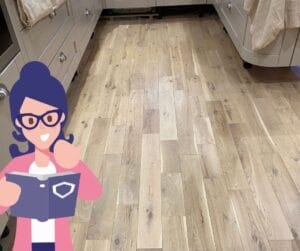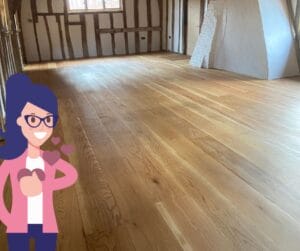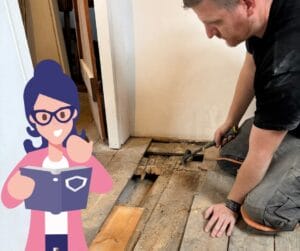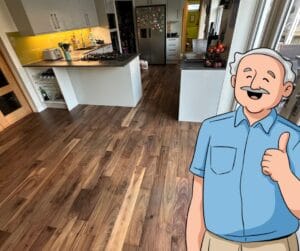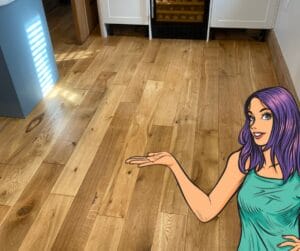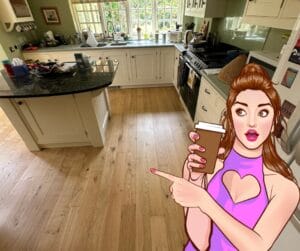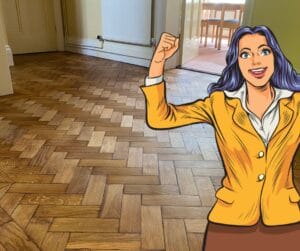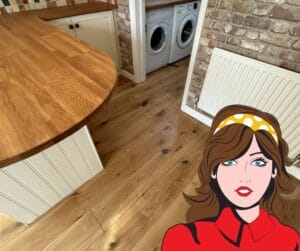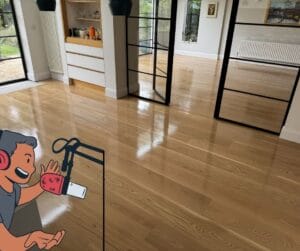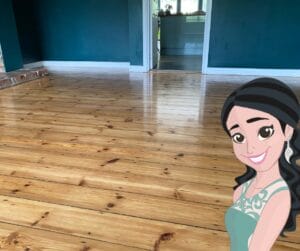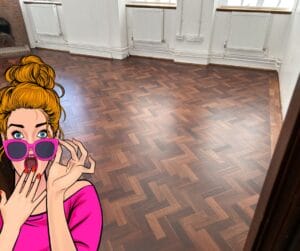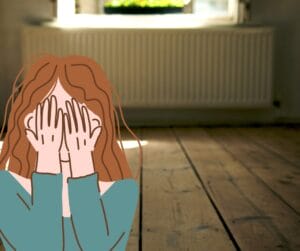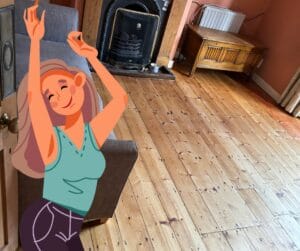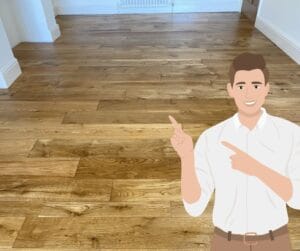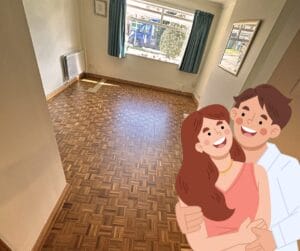Hello to our regular readers, and a big warm welcome if you’re new here! I’m Tracey from Art of Clean, and today we’re diving into our latest article: “How to Fix Loose Parquet Flooring.” We promise to keep it simple, friendly, and super helpful, so grab a cuppa and let’s get started!
Parquet flooring is gorgeous, isn’t it? It brings so much charm and elegance to your home. But what do you do when those lovely little blocks start to wobble and come loose? No worries, we’ve got your back!
What’s the Buzz About Parquet Flooring?
Parquet flooring often comes in a popular style called ‘5-finger parquet.’ Think of it as little wooden fingers (five of them!) neatly grouped together into one block. What most people don’t know is these floors aren’t laid piece by piece; they actually come in ready-made sections or blocks.
Parquet floors were all the rage back in the 60s, 70s, and 80s, though you can find them in homes of all ages. Back then, they used a common glue called bitumen (a thick, black adhesive). It wasn’t just glue—it also acted as a moisture barrier. But as time goes on, this glue gets old, dries out, cracks, and that’s when trouble starts!
Why Do Parquet Blocks Get Loose?
Once that old bitumen glue starts failing, your blocks might feel a bit loose underfoot. Give them a gentle tap, and you might notice they’re wobbly. The problem is that if one block comes loose, its neighbours usually join the party. They all rely on each other to stay put!
Easy-Peasy Guide to Fix Loose Parquet Flooring
If you’ve got just a few loose blocks, don’t stress—it’s pretty straightforward to fix:
- Clean It Up: Start by cleaning out any crumbly old glue from under the blocks.
- Pick the Right Glue: Here’s the magic trick—use a solvent-based adhesive (never a water-based one!). Solvent-based glue sticks much better and lasts longer on that old bitumen.
- Stick Em Back: Apply a good dollop of your glue on the bottom of the blocks and press them back firmly into place.
- Fill the Gaps: After your blocks are secure, fill any gaps with a mix of resin and sawdust (from your own floor if possible). This seals things nicely, keeping moisture out and making your floor look seamless.
Keeping Your Parquet Flooring Happy & Dry
Once you’ve fixed those loose blocks, keeping moisture away is key. Too much water during cleaning can seep into the gaps, making blocks swell and pop loose again. Use gentle, moisture-minimal cleaning methods.
When to Call in the Pros
If DIY repairs sound scary or your floor needs a lot of love, it’s best to call in experts who specialise in parquet flooring. Professionals know:
- Which glue works best for lasting results.
- How to fill gaps perfectly to prevent future issues.
- The right finishing touches to keep your floor gorgeous and durable.
At Art of Clean, we adore parquet floors and have been making them beautiful for years!
Need Help? We’re Here for You!
If your parquet flooring is giving you grief or if you just want some friendly advice, we’re always happy to chat. Our mission is to help you love your floor again!
For expert parquet repairs, sanding, and restoration, reach out to us at Floor Sanding Cambridge. We’ll help make your floor fabulous again!


